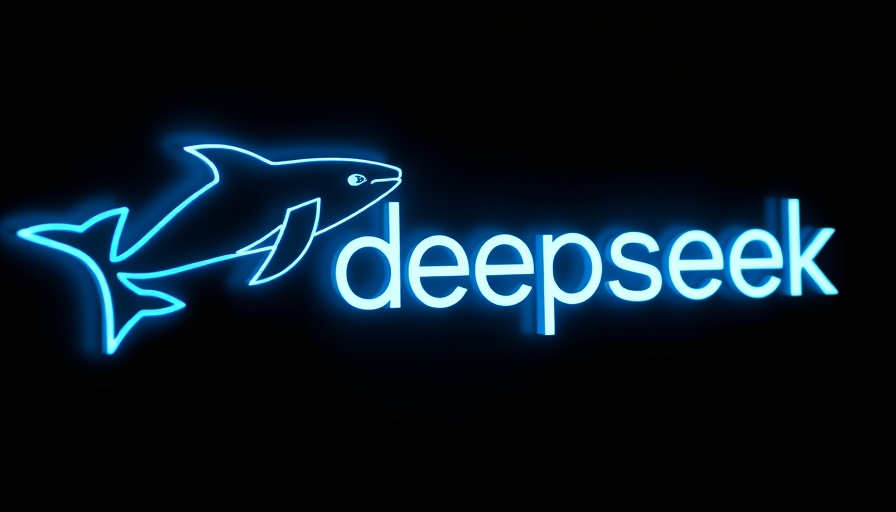
Revolutionizing AI Interactions: DeepSeek R1 and GRPO
The emergence of artificial intelligence (AI) has transformed the landscape of numerous industries, and at the forefront of this transformation is the integration of advanced reinforcement learning (RL) techniques like DeepSeek R1 and GRPO. These innovations are not only changing how we understand AI but also how small and medium-sized businesses (SMBs) can leverage AI to improve their operations and customer interactions.
Understanding GRPO: The Game Changer in AI
At the core of GRPO (Group Relative Policy Optimization) is its ability to balance exploration and exploitation, a finding crucial for the dynamic world of reinforcement learning. By grouping similar learning behaviors, GRPO allows models to adapt based on shared experiences, enhancing their performance in nuanced contexts. This is particularly valuable for businesses that require tailored solutions to diverse customer needs.
Enhanced Learning with GRPO
GRPO's methodology is elaborate yet effective. It includes:
- Experience Collection and Preprocessing: This phase gathers relevant experiences from various contexts, ensuring that the model learns from a wide range of scenarios.
- Dynamic Grouping: By clustering behaviors that are contextually similar, GRPO can optimize learning more efficiently.
- Relative Advantages Calculation: This minimizes discrepancies in learning by focusing on group performance metrics instead of solely individual outcomes.
Such an approach not only boosts the learning efficiency of AI models but also makes them more context-aware, significantly benefiting businesses employing LLMs (Large Language Models) for customer service or content generation.
How DeepSeek R1 Implements GRPO
DeepSeek R1 has harnessed the power of GRPO through its training pipeline. It efficiently manages multiple tasks, ensuring that both exploration and the practical application of learned behaviors are streamlined. This means that businesses using DeepSeek R1 can expect improved responses from AI-based customer interactions, leading to greater customer satisfaction and loyalty.
The Competitive Edge: Advantages of Using GRPO
For small and medium businesses, the adoption of GRPO can provide several competitive advantages:
- Improved Performance: GRPO's optimization techniques result in more accurate and contextually relevant AI outputs.
- Reduced Training Variance: By normalizing updates across grouped experiences, AI models show more consistency.
- Enhanced Decision Making: Businesses can leverage AI that adapts based on past interactions, improving future decisions.
CHALLENGES AND STRATEGIES FOR IMPLEMENTATION
Despite its numerous benefits, businesses should be aware of the limitations that come with GRPO. Transitioning to such advanced AI techniques may present challenges, including initial training costs and the requirement for technical expertise. Nevertheless, a step-by-step implementation strategy can mitigate these issues:
- Study and understand GRPO from available resources to align it with specific business needs.
- Start small by integrating GRPO into less complex systems before expanding to more critical operations.
- Engage with AI specialists or consultants to establish robust training processes.
Making Informed Decisions with GRPO
For SMBs, understanding the nuances of GRPO can lead to informed decisions regarding AI integration. This knowledge encourages businesses to embrace AI not just as a tool, but as a strategic partner that can propel growth. This understanding will sharpen competitive positioning and enhance operational efficiency.
Future Trends in AI: What Lies Ahead?
As technology advances, we can expect GRPO methodologies to evolve further, leading to even more sophisticated forms of AI learning. Future implementations might include an even greater emphasis on real-time data processing, enabling businesses to respond to market changes instantly. These advancements will not only empower companies to remain agile but also to anticipate user needs more effectively.
In conclusion, the incorporation of GRPO and DeepSeek R1 heralds a new age for AI in business, particularly for smaller enterprises looking to upgrade their operational frameworks. As understanding deepens and implementations become more commonplace, businesses should seize the opportunity to enhance their interactions and operational effectiveness.
Stay ahead in the AI curve by considering how GRPO and similar technologies can be embedded into your business processes, propelling you toward future success.
Ready to transform your business with AI? Start exploring the possibilities of GRPO today!
 Add Row
Add Row  Add
Add 



Write A Comment